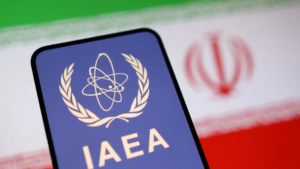
Ongoing protests in Balochistan against the presence of Chinese nationals has left Chinese leadership extremely worried. Balochis have demanded Chinese to leave their region which China is not able to digest because Pakistan is an all weather ally. Though these demands are not directly linked to Chinese projects in Gwadar, yet residents consider the developments to be part of the problem. The takeover of Pakistan’s fisheries and consequent loss of livelihood has been directly linked to the Chinese. There are around 500 Chinese citizens living in the Gwadar Port compound.
Fed up with the protest which started two months ago, Baloch government has tightened security in and around Gwadar. Cellular services and mobile networks suspended in Pakistan’s port city of Gwadar. Police personnel were deployed to maintain law and order in the city. According to Pakistan’s newspaper, the Balochistan government has imposed section 144 to curb the display of weapons and pillion riding in Gwadar to maintain law and order.
In Gwadar, the Balochistan government has cracked down hard on the protesters. An emergency law banning the gathering of five or more people has also been implemented. More than 100 people have been arrested. Pakistan’s provincial government in Balochistan imposed a curfew in the port city of Gwadar after a policeman was killed in clashes with protestors in the last week of December. But protesters led by Haq Do Tehreek (HDT) , public movement have been constantly demonstrating against illegal fishing by trawlers at the cost of local fishermen who have been dependent on the fish trade for generations for their livelihood. Cleric Mualana Hidaytur Rehman has been leading the protest.
Deeply concerned about security of investments in the region, China recently offered help to the Pakistan Army curb dissent in Balochistan. The move is likely to create further tension within Pakistan and outside. Earlier Pakistan Army launched large scale military Operation ‘Bolan’, in the mountain ranges of Bolan, Balochistanin October end after ultimatum from Baloch Liberation Army (BLA) for prisoner swap talks with the Pakistan Army. The operation Bolan was prompted by the pressure from China which insisted that the Shehbaz Sharif government take steps for the safety and security of Chinese personnel working in Balochistan. The most astonishing was that use of combat UAVs by the Pakistani Army against Baloch rebels this time. For several years, the army used fighter jets and armed helicopters against Baloch rebels.
Diplomatic experts from Balochistan accused China of helping Pakistan launch drone attack. Faiz M Baluch, editor of the online news website Balochwarna and the UK-based treasurer of the Free Balochistan Movement (FBM) claimed “China is assisting Pakistan in many ways. It provides technology to Pakistan. We believe that China is assisting Pakistan in tracing the locations of the Baloch fighters. China is complicit in the Baloch genocide. In February, at least ten Baloch fighters were killed in a drone attack in Hoshab, Turbat, in the Makran region. We strongly believe that China assisted Pakistan in the drone attack as it is not that capable”. The information about it was shared on Twitter and Pakistan based defence blogs. The Balochistan Post tweeted that China and Turkey have supplied various models of combat UAVs to Pakistan. According to the information on Twitter and Pakistan-based defence blogs, Chinese CH-4B UAVs have been spotted over Bolan.
According to available information, Pakistan received five Cai Hong 4 (Rainbow 4, or CH-4) multirole medium-altitude long-endurance (MALE) UAVs from China in January 2021. A Chinese PLA detachment based in Pasni, Gwadar helps the Pakistani military operate these CH-4B drones.
As far as China is concerned, it has both commercial and military interests in the Pakistani port of Gwadar and people of Balochistan have realised that the Chinese investment there is more about its own economic and strategic interests.
The CPEC is the flagship project of China’s ambitious 60 billion US dollars Belt and Road Initiative (BRI) and it links China’s Xinjiang province with Pakistan’s Gwadar port in Balochistan province. Both Pakistan and China have reached an agreement to use the full potential of the strategic Gwadar Port in Balochistan province, a major project under the CPEC that provides the Communist-giant an opening to the Arabian Sea.
This decision was taken at a meeting between Pakistani and Chinese officials in December 2021. According to CPEC statement, the two sides resolved to redouble the efforts to tap the full potential of Gwadar port and free zone as well as to make sure that the local population of Gwadar and surrounding areas fully benefit from these projects by utilising the massive opportunities being created in various sectors. The two sides reviewed the progress made on various projects, including full operationalisation of the Gwadar port and its inclusion in the Afghan Transit Trade route and vowed to redouble efforts to tap the full potential of the Gwadar Port.
The fact is growing frustration in China about Gwadar’s slow progress. Pakistan has managed to complete just three CPEC projects in Gwadar as “one-dozen projects costing nearly two billion US dollars remain unfinished including water supply and electricity provision. It is to be seen how Pakistan government pacifies the situation and restores China’s confidence in its capabilities. Much will depend on that because China considers Pakistan as an all weather ally. Its stakes are very high in Gwadar port. The CPEC is a collection of infrastructure and other projects under construction throughout Pakistan since 2013. The CPEC was originally valued at 46 billion US dollars, the projects were worth 62 billion US dollarsin 2017. Ends.






